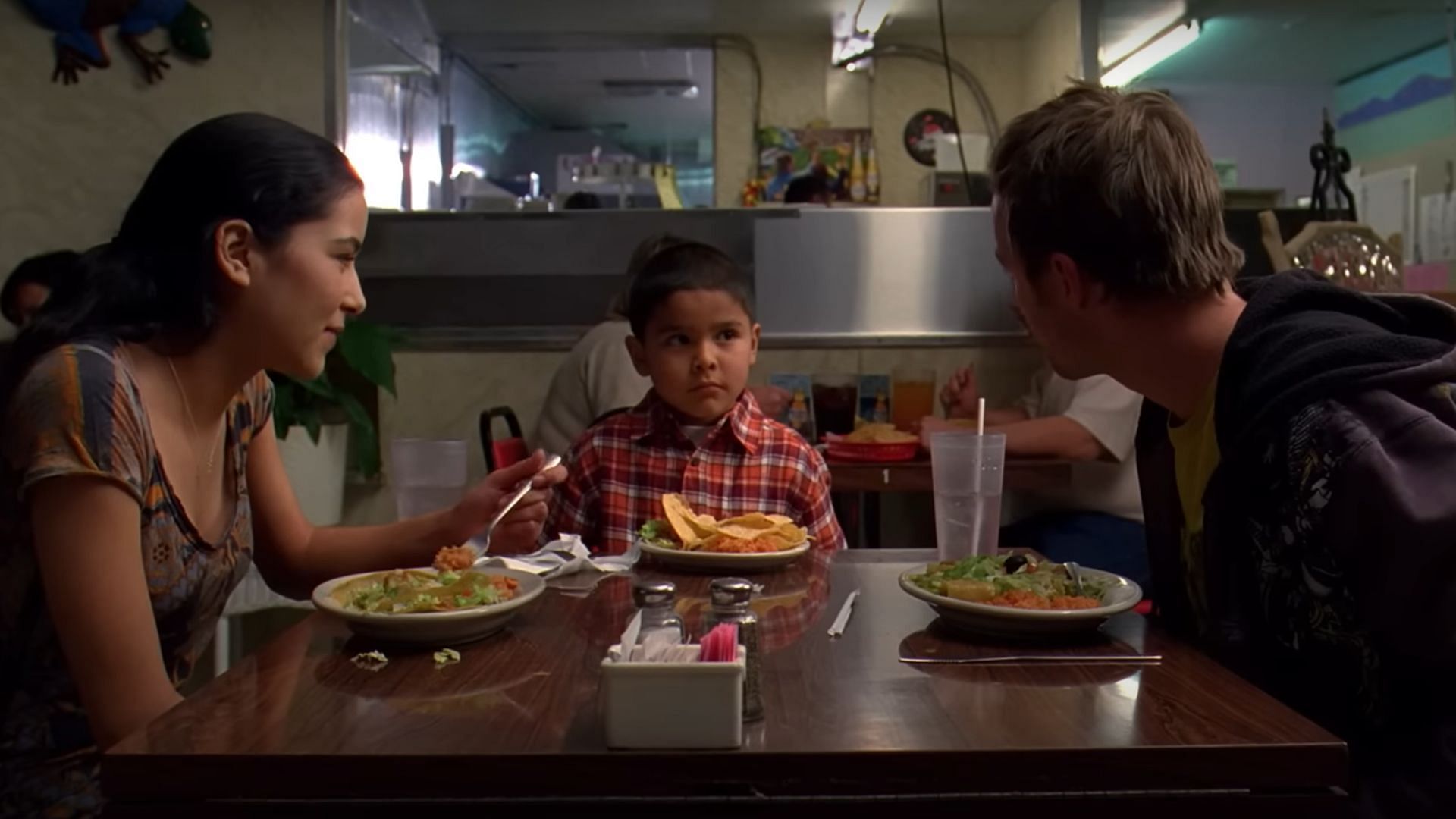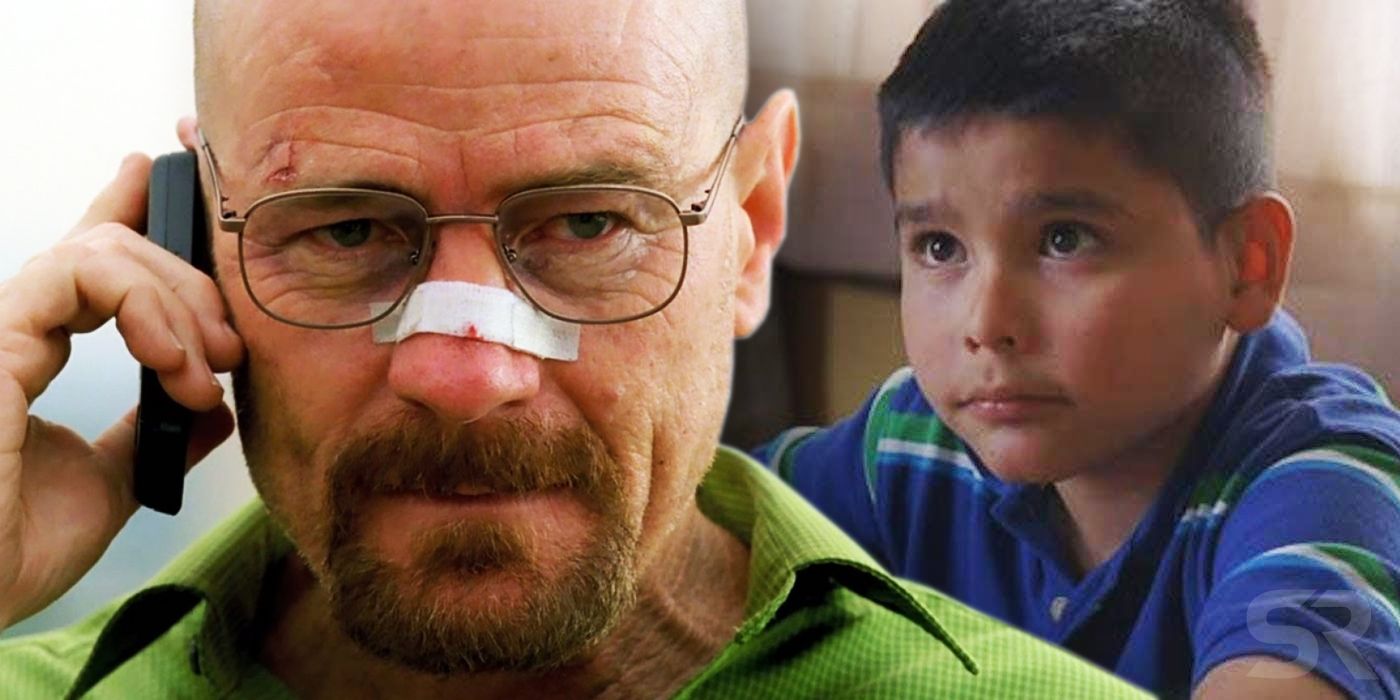Breaking Bad: Did Walt Poison Brock? Lily Of The Valley Mystery
Did Walter White, the seemingly mild-mannered chemistry teacher turned meth kingpin, truly poison young Brock Cantillo, the innocent son of Jesse Pinkman's girlfriend, Andrea? The answer, as chilling as it is, is a resounding yes, but the method and the motive are far more intricate than initially perceived. The events surrounding Brock's poisoning in the critically acclaimed series "Breaking Bad" remain a pivotal moment, showcasing Walter White's descent into moral depravity and his masterful manipulation of those closest to him.
The narrative unfolds during the show's fourth season. Jesse Pinkman, embroiled in the dangerous world of drug manufacturing and distribution, finds himself increasingly entangled with the enigmatic Gustavo Fring, a ruthless drug lord with a meticulously crafted veneer of respectability. Simultaneously, Walter White, Jesse's former chemistry teacher and now partner in crime, is locked in a high-stakes power struggle with Fring. The tension escalates, and White, desperate to eliminate Fring, sees an opportunity to exploit Jesse's vulnerabilities.
The focus of this manipulation centers on Brock Cantillo. The young boy held a special place in Jesse's heart, and his well-being was a significant leverage point for White. By harming Brock, White could effectively control Jesse, turning him against Fring and securing his own survival. This calculated move is a testament to White's transformation into a cold, calculating strategist, willing to use even the most innocent as pawns in his deadly game.
- Vijay Varmas Past Marriage Unveiling The Mystery Of His First Wife
- Emma Roberts Bra Size Discover Her Measurements
The central question revolves around the poison used: ricin, a highly toxic substance, or the less lethal, but still dangerous, lily of the valley. The initial suspicion was that Brock had been poisoned with ricin, a poison that Walter had painstakingly crafted to eliminate his enemies. The narrative cleverly used this to create a sense of suspicion and misdirection, leading the viewer down the same path as Jesse Pinkman. The truth, however, revealed a more nuanced and disturbing reality.
Here is a table providing a clearer picture:
| Aspect | Details |
|---|---|
| Character | Brock Cantillo |
| Relationship | Son of Andrea Cantillo (Jesse Pinkman's girlfriend) |
| Poisoning | Victim of Walter White's manipulation |
| Method | Poisoned with lily of the valley |
| Motive | To manipulate Jesse Pinkman into turning against Gustavo Fring |
| Consequences | Caused Jesse to doubt Fring, leading to greater control for Walter White. |
| Episode | Season 4, episodes 12 and 13 |
Source: Breaking Bad Wiki - Brock Cantillo
- Erulz Kannada 2024 Your Ultimate Guide To Downloading Kannada Movies
- The Twisted Truth Behind Willy Wonkas Chocolate Factory
The evidence points to the lily of the valley as the weapon of choice. This plant, Convallaria majalis, is a poisonous flowering plant, and, critically, it was prominently displayed in Walter White's backyard during season four. The subtle visual cues, the careful framing of the plant, and the knowledge that the berries are toxic, all serve to highlight the role it played in the events leading up to the elimination of Gus Fring. It was the perfect tool for manipulation.
The narrative shows the precise method of how Walter White planted the poison within the young boy's environment. It wasn't a direct injection, or an easily identifiable act of malice. Instead, White's manipulation was more subtle. The flower's toxins mimicked the effects of poisoning, enough to arouse suspicion and point the finger, falsely, at Gus Fring. In the end, the method, a calculated move designed to instigate distrust, played a pivotal role in the overall scheme of the show.
The impact of the poisoning on the relationship between Jesse and Walter is undeniable. Jesse's world is shaken; the trust is shattered, and his anger flares, fueled by the thought of his friends son being harmed. Walter, in a move that further solidified his descent into evil, was able to expertly channel that rage. This manipulation was the key to ensuring Jesse's continued loyalty and cooperation.
Walter's actions illustrate a chilling truth, that the pursuit of power can corrupt even the most intelligent and morally questionable of men. His calculated decision, driven by self-preservation and an insatiable desire for control, resulted in the poisoning of an innocent child. This action stands as one of the defining moments of the series, solidifying Walter White's transformation from a sympathetic anti-hero to a truly villainous character.
Moreover, the show's depiction of the aftermath is critical. Jesse's pain, his desperate search for answers, and his ultimate confrontation with Walter highlight the human cost of White's ambition. The emotional turmoil that unfolds in the wake of the poisoning acts as a testament to the lasting damage caused by Walter's choices.
The question of why Walter chose the lily of the valley rather than the ricin has a clear, strategic answer. The ricin was the more lethal option, which could have eliminated Brock completely, leading to irreversible consequences, and raising immediate suspicions toward Walter himself. Using the lily of the valley, on the other hand, created a more ambiguous scenario. It made Brock sick without killing him, casting suspicion on Gus Fring and making Jesse feel compelled to act against him.
The ambiguity surrounding the method is another aspect that the show uses to perfection. It keeps the audience and Jesse guessing. The mystery of how the poisoning took place heightened the tension and fueled Jesse's rage and confusion. The reveal, over time, only served to deepen the audience's understanding of Walter White's calculated nature.
Walter's actions in the show illustrate how far he was willing to go to manipulate others and achieve his goals. He weaponized Jesses bond with Brock, using that affection to propel himself forward on a path that led to further destruction. It also highlights a crucial plot point. It explains how Jesse would agree to align with White on the pretext of ridding the world of Fring. Without this key element, it's possible that the events of the series would have played out differently.
The lily of the valley represents more than just a poison; it's a symbol. It stands for Walter White's deceptive nature. The beautiful, innocent-looking flower conceals a deadly secret. The fact that Walter had it in his backyard and that he used it in such a calculated way, only drives home the parallels between his actions and the poison he deploys.
The investigation into the poisoning is also meticulously portrayed in "Breaking Bad." The medical staff's initial assumptions and their shift in focus as they uncover the truth, adds a layer of realism to the narrative. The fact that they initially suspected ricin served to throw Jesse and the audience off the scent, only heightening the impact of the revelation.
The emotional responses of the characters, particularly Jesse, are masterfully depicted. His devastation, his desperation, and his ultimate realization of Walter's betrayal create a narrative of tragedy. The show excels in presenting its audience with the complex, multifaceted characters, and allows viewers to come to their own conclusions. The fact that the audience is given the information bit by bit is a hallmark of Breaking Bad's writing style.
The revelation of Walter's actions came at a pivotal moment, a turning point in the series. The knowledge that White was willing to harm an innocent child to further his agenda solidified his status as the show's main antagonist, as he was prepared to sacrifice anyone to reach his goal. The effect of the poisoning on Jesses character arc is another critical component of the narrative.
When Walter confessed to the poisoning, he maintained a faade of control, and he was able to control the narrative. This is a testament to his ability to think on his feet, and a keen understanding of how the truth could serve his overall goals. This is also where we get a better understanding of how far White had fallen.
The aftermath of the incident had a substantial impact on Jesse's character arc, transforming his relationship with Walter and shaping the events of the later seasons. It solidified Jesses growing distrust of Walter. It ultimately led Jesse to seek to break free from Walter's manipulative grip.
One of the most intriguing aspects of the Brock Cantillo poisoning is how it highlights the overarching themes of "Breaking Bad". The show explores the dark side of human nature, the destructive potential of greed, and the consequences of moral compromises. It also shows the intricate interplay between good and evil. Walter White's actions, his manipulation, and his ultimate responsibility for Brock's suffering is a poignant illustration of these themes.
The manipulation of Jesse by White and his ultimate aim, as it unfolds, is a case study in control. By exploiting Jesse's affections, White successfully turned his partner into a tool. This aspect has made the show such an engaging and enduring piece of drama.
The use of the lily of the valley, rather than the ricin, is a testament to the meticulous planning that went into White's schemes. He understood the value of misdirection, of planting seeds of suspicion and of exploiting the vulnerabilities of those around him. It was a strategy that played out in many ways.
The events surrounding Brock's poisoning also reveal the brutal realities of the drug world. The constant danger, the ever-present threat of violence, and the willingness to sacrifice anyone and anything in the pursuit of power, are all vividly depicted. The show's exploration of these themes resonates even today.
The reactions of the fans, the theories, the debates, and the discussions, only show how much the show continues to captivate the audience. The enduring appeal of "Breaking Bad" lies in its intricate plotlines, its multi-layered characters, and its willingness to confront the darkest aspects of human nature. The events surrounding Brock Cantillo serve as a powerful example of these themes.
In conclusion, the poisoning of Brock Cantillo in "Breaking Bad" is a chilling depiction of Walter White's descent into evil. It highlights his manipulative nature, his willingness to use anyone as a pawn, and the devastating consequences of his actions. The use of the lily of the valley, the carefully constructed plot, and the emotional responses of the characters make this a defining moment in the series, showcasing the depth and complexity of the show's exploration of morality and the human condition.



Detail Author:
- Name : Ross Hayes MD
- Username : arjun.romaguera
- Email : krowe@haley.biz
- Birthdate : 1984-11-30
- Address : 1080 Eusebio Walk Goldnerville, TX 42067
- Phone : +1-516-855-3820
- Company : Carroll-Hartmann
- Job : Animal Control Worker
- Bio : Sit autem aut et animi ipsum. Qui qui aut dolorem quaerat quas enim. Doloremque odit enim et dolorem soluta nihil. Aliquam nihil voluptas doloribus natus quia exercitationem.
Socials
instagram:
- url : https://instagram.com/kemmerl
- username : kemmerl
- bio : Veritatis sit est voluptatem praesentium ut velit qui. Dolorem ut illo velit minus deleniti.
- followers : 3851
- following : 2688
linkedin:
- url : https://linkedin.com/in/lilla.kemmer
- username : lilla.kemmer
- bio : Et commodi itaque omnis libero eum architecto.
- followers : 3202
- following : 2311